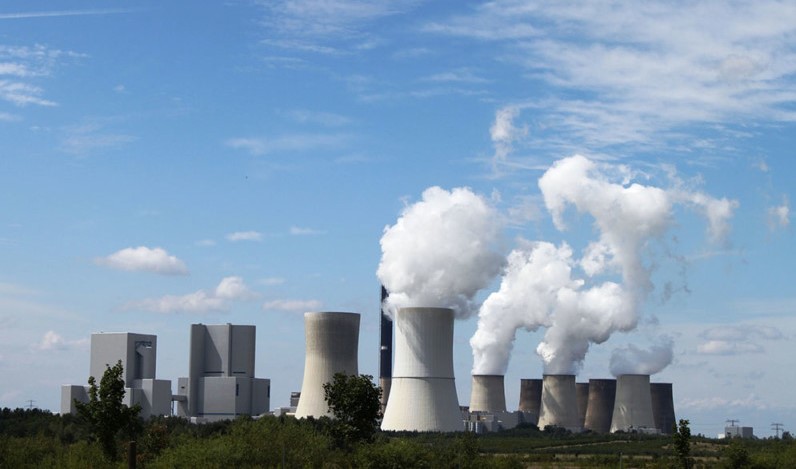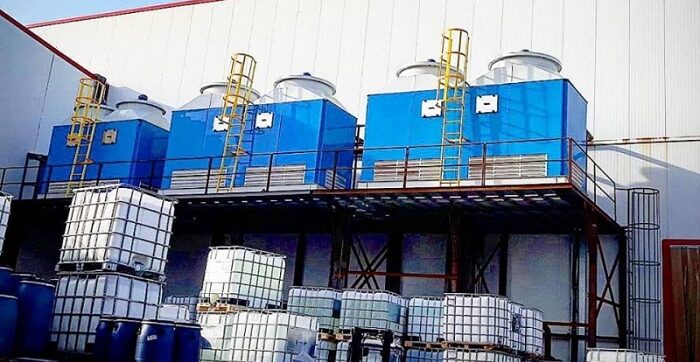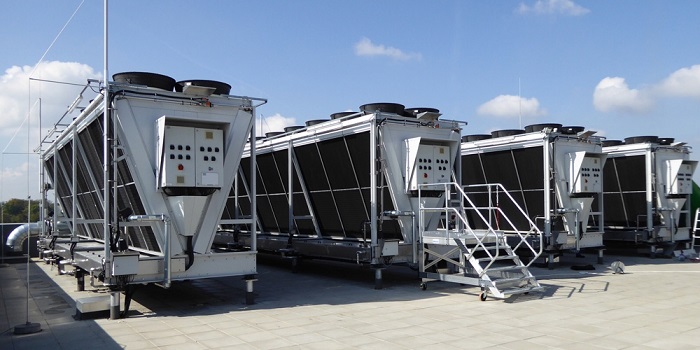In this article, you will read about wet vs dry cooling towers. Both of these types of cooling tower are popular in the market and some people might get confused about which one to choose for their specific application. So, knowing both of them and learning their differences can be beneficial to not only expand your knowledge on the subject, Also make sure that you are buying the right one that provides the desired outcome you expect. If you are ready to learn about the differences between these two, continue reading this article from Linquip.
Wet vs dry cooling towers: Working principle
The main goal of cooling towers is to remove the excess heat and reject it to the outside environment. Both dry and wet cooling towers have been designed to yield this outcome.
They are used in a wide variety of applications (e.g. in HVAC systems as HVAC cooling towers). They reject the heat to the environment by extracting it with the help of a water stream that lowers the temperature by releasing the heat received from the inside to the outside of the tower.
The two main cooling towers are Closed-circuit (AKA Dry Cooling Towers) and Open-circuit (AKA Wet Cooling Towers). The cooling tower design in both of these two systems help them reach the same purpose, but they have different ways to use the fluid for the desired outcome. Dry cooling tower working principle differs a bit with the wet one since there’s no direct contact between the fluid that’s being cooled and the ambient air. In the wet cooling towers, though, the fluid has direct contact with the ambient air.
Another point to consider in the wet vs dry cooling towers comparison is that dry cooling towers or dry coolers are capable of bringing the water temperature down to the ambient temperature. Then to achieve additional cooling, the inlet air will be pre-cooled. While in the wet cooling towers, the water evaporation enables the tower to exchange the heat with the passing air stream through it. This process cools down the water temperature below the ambient temperature. This temperature will be above the dew point or approach temperature.
Due to this working principle, you should be aware that in the wet vs dry cooling towers comparison, one of the major flaws of wet cooling towers is that with the increase in the ambient air’s humidity, its performance drops to a great extent. They are capable of working in hot and dry climates, but you should keep the humidity under control. But dry cooling towers can easily work when the humidity increases but they are highly dependent on the air temperature, so if you’re using a dry one, it should be the air temperature to look out for.
Wet vs dry cooling towers: Cooling tower design
Wet cooling towers have a much more sophisticated design than dry ones. While dry coolers have a robust and straightforward design and have a heat exchanger and fans, the wet ones have nozzles to spray hot water onto a fill or wet deck (heat exchanging media) homogeneously. The most popular media in the wet towers are splash fill and film fill.
Film fills have textured sheets with a large surface that houses the water, creating a thin film that has contact with the airflow. The large surface makes the heat exchange between air and water become as high as possible. You can use film fills for clean water. And the other kind has a multi-layered structure that increases the contact between the air and water by forming small droplets. Plus, it has a high heat-transfer rate. This one is suitable for dirty or low-quality water that contains high solid contents.
The heat exchanger in the dry cooling towers is typically microchannel coils or finned tube. The fans help directing the air stream through the exchanger resulting in the decrease of water or glycol solution’s temperature. The fans in wet cooling towers, though, direct the ambient air through the tower.
Wet towers contain drift eliminators to help a major problem: preventing the discharge of water droplets into the air.
Another thing to know about wet vs dry cooling towers is that in the dry coolers, there are vertical and horizontal airflow arrangement, while in the wet towers, the design is counter-flow and cross-flow. In the counter-flow, the air flows from the bottom, while in the cross-flow, this flow is perpendicular to the direction of the water stream.
Wet vs dry cooling towers: Cons and Pros
There are many advantages and disadvantages to using wet and dry towers.
When using the dry one, you have low initial costs, low operating costs and low maintenance costs; while in the wet towers the installation and equipment costs are high as well as the operating costs (maintenance of the system components, frequent water treatment and refill, and the electricity costs.)
Wet cooling towers are suitable for industrial uses in the large facilities that require cooling a high volume of water. On the other hand, the dry cooling towers are suitable for small to medium applications in the industrial and commercial systems.
One of the advantages of wet towers is their ability to cool down the water below the dry-bulb temperature, while the dry towers are not equipped with such feature and can do so only by having adiabatic pre-cooling.
Another disadvantage of dry towers is that they have relatively low capacity per unit, while its counterpart has a high cooling capacity per unit.
Among the other advantages of dry towers, you can see the minimal system foundling and process water contamination; the ability to work in different climate conditions; no water loss; and different unit designs tailored to all environments and different applications.
Keep in mind that wet towers have relatively high water consumption since they use evaporation as a cooling method. They also form rust along the pipework. But they have a reliable operation in hot ambient conditions!
So, now you know all there’s to know about wet vs dry cooling towers. You can talk about these differences effortlessly and show off your knowledge to others! Or you can use it to choose the right cooling tower for your system! Do you have any experiences with cooling towers or have anything to add to this article about the difference between these two? Then comment below and share your knowledge with us! And if you have any questions about this field, feel free to sign up on our website and one of our experts will help you solve your problems. Join Linquip today and have an easier time finding your answers.
Buy Equipment or Ask for a Service
By using Linquip RFQ Service, you can expect to receive quotations from various suppliers across multiple industries and regions.
Click Here to Request a Quotation From Suppliers and Service Providers
Read More In Linquip





